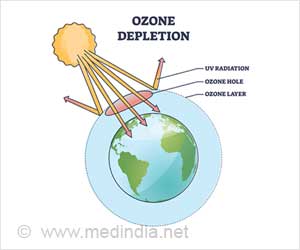Conservationists try to figure out whether by planting cacao trees, yielding cocoa used in chocolates, the vanishing rain forests could be saved.
An experiment going on in a corner of eastern Brazil has attracted worldwide attention. Right in the midst of a thinning rainforest cacao trees are planted.
There's a lot less rainforest than there once was. There used to be 330 million acres of rainforest in eastern Brazil, called the Mata Atlantica. Settlers arrived hundreds of years ago and began destroying the forest for the wood, and to create fields for pasture and crops. Only 7 percent of the Mata Atlantica remains, and destruction is still going on. Every time a tree is burned, its stored carbon is released. As more carbon is released into the air, the planet gets warmer.That worries Dario Ahnert, a plant expert at the State University of Santa Cruz in Eastern Brazil. He says farmers need an incentive to save the remaining forest, and he hopes chocolate will be that incentive. Chocolate used to be a huge industry here, but in the past two decades, plant disease and low prices in the world market for cocoa beans devastated the industry. Farmers turned to other ways of making a living, including logging trees or burning the forest for farmland or pasture. When the nutrients in the soil were used up, the land was abandoned.
Ahnert wants to persuade farmers to return to chocolate farming and preserve the forest. His friend, Joao Tavares, shows it can be done, reports NPR, an independent radio network in the US.
Joao Tavares is a fourth-generation cocoa producer. Tavares, along with his brother and father, has 2,200 acres of rainforest planted with cacao trees. They grow cocoa using a method called cabruca — cutting down just a few of the tall rainforest trees, and planting the mid-height cacao trees underneath.
Inside Tavares' cabruca forest, the ground is covered in a thick layer of composting leaves. It's moist, shady and cool here in the cabruca. Football-shaped pods — striped in yellow and green and orange and brown — jut out from the trunks and branches of the cacao trees.
Tavares has worked hard to maintain, and also to restore, his little piece of the rainforest. He says that in the past 10 years, he has planted many wild trees.
Advertisement
He gets fewer cacao trees to the acre by planting inside the forest. But he avoids the drawbacks other farmers struggle with when they grow cacao trees on more open land.
Advertisement
There's also an expanding market for environmentally friendly chocolate. Tavares has been able to get a premium for some of his crop.
Still, his friend, professor Ahnert, admits that cabruca is a tough sell: Farmers want more so-called modern approaches and quicker money. That's why Ahnert hopes that cabruca can become part of the carbon credit market. Farmers would then get money for preserving forest trees, as well as for their chocolate.
"You could increase the income, so I hope some day people that maintain this area are able to get carbon credits," Ahnert says.
The World Agroforestry Center and the chocolate manufacturer Mars Inc. are currently studying how carbon storage can be measured on cabruca-like farms, and whether a carbon credit system would help farmers — and the environment.
And there's an even more ambitious idea out there. Howard Shapiro, chief agronomist at Mars, hopes that chocolate could even bring back a little of the forest paradise that's been lost.
He's doing tests with local scientists at Brazil's national chocolate research institute.
"This is an area that's been planted on degraded land," Shapiro says, giving a tour of the three-acre research plot.
After the forest disappeared, the soil became hard and compact, like yellow cement. Only weeds grew in it. Shapiro and his colleagues asked local farmers what sort of plants they would like, both in the long run and while they wait for the soil to become rich enough to support cacao trees.
"What we decided to do was, we would begin with annual crops," Shapiro explains. "Corn, beans — things that have a cash crop value — melons, squashes, and begin to establish bananas for shade, then start to plant cacao."
They also planted rubber trees, and heliconium flowers. The first plants went in seven years ago. Now it's easy to grab a handful of soil. It's dark brown, moist and crumbly, like devil's food cake — with worms. But the worms are good for the soil.
"See all the little flowers on this tree?" Shapiro asks, pointing to a cacao tree. "All those little pink buds. … It's healthy. These trees are healthy."
Shapiro wants to work out the details, but he's ready to say the project is a success. "We learned that you could take totally abandoned land, and you could restore it to profitability after about three years," he says.
Source-Medindia
GPL/P





